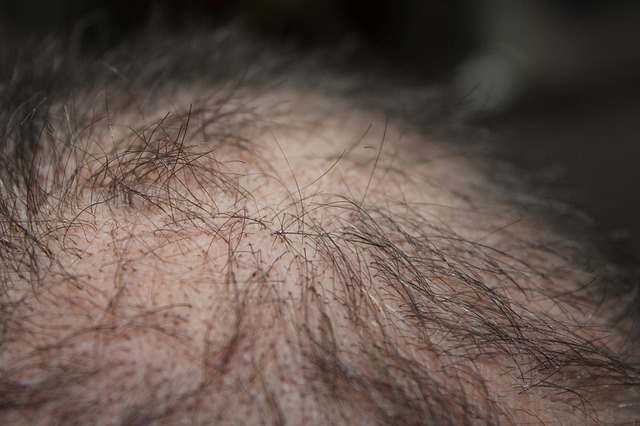Lifestyle
Hair Transplant is Emerging as the Number 1 Solution for Hair Loss in South India

More South Indians are going for Hair Transplant as the solution to hair loss, as the prices of the treatment drop. South India claims to have some of the best Indian healthcare achievements when it comes to hair loss. These include world’s biggest chain of hospitals, millions of medical tourist’s flocking to get a low-cost treatment, and innovative surgical procedures. These achievements have pushed more and more South Indians to seek support of this treatment to reduce their baldness.
Most of the people today are affected by the hair loss. The prime reason for that is the genetic or hereditary baldness. But there is an environmental factor too, that accelerates the hair loss problem and one need to have a reliable treatment to sort out the issue of Hair Loss.
Solution for the above all problems is a hair transplant. The hair transplantation available in south India is a straightforward concept. Most people who experience hair loss still have an abundance of hair growing on the back and side part of their scalp called donor area.
The required hair is removed from the donor area and implanted on the bald areas of the person called recipient area.
The cities in South India where you can find the best Hair transplant being performed are Chennai, Hyderabad, Visakhapatnam and Bangalore. Outstanding innovations in healthcare are taking place in these cities.
Why Hair Transplant in South India?
As per the previous statistical records, you can compare the difference between the cost of hair transplant in South India with the cost of hair transplant in other regions in India, it is about 25-30 percent lesser than the other parts of the country.
Due to the minimal hair transplant cost in south India, it is turning into being the most preferred destination for hair transplantation treatment across the world.
South India is broadly known for financially savvy therapeutic strategies, which offers reasonable hair transplant surgeries and treatment choices.
Different Types of Techniques Available in South India
The modern techniques are permanent, and they pick up follicular clusters of hair. This process is called Follicular Hair Transplantation (FUT) and follicular unit extraction (FUE). And the implantation process is done with the help of methods like Direct hair implant (DHI) and Stick and placement method.
Follicular Unit Extraction (FUE)-
FUE comes with the latest extraction process in hair transplant, with minimally invasive technology and advanced grafting techniques.
Here in this method, the extraction of hair follicles is done with the help a device that makes a tiny circular incision around the hair follicles to isolate the graft.
The graft is then extracted directly from the scalp using forceps. By using a high-powered stereo microscope, and specially trained technicians they will isolate, prepare and ensure that the follicular grafts remain in good condition for implantation.
These Follicular units are arranged into groups depending on the number of hairs contained in each hair follicle (1-4) hairs are commonly found within each follicle.
Follicular Unit Transplant (FUT)-
This method is known for its highly advanced technique in hair transplantation, by this method, the transplanted hair will have natural hair growth and it will be a good choice for people who has large baldness level on their head.
In this, the hair transplant is done by removing the entire strip of skin from the backside of the scalp where the hair fall is less.
With the help of stitches, the skin is covered in the area from where the follicles had removed. The area from where the strip is taken will leaves, a linear scar on the scalp.
The strip that removed which contains the hair follicles is divided into grafts consisting of one or two follicles.
Thousands of these grafts are placed into tiny incisions made on the bald areas of the patient’s scalp, in a single session.
Direct Hair Implantation (DHI) –
Once the harvesting of hair follicles process is performed with the help of either of the above procedures then the implantation process begins.
The implantation process is performed with the help of the implanter pen. The extracted hair follicles are inserted into the implanter pen.
And then the physicians will make the incision on the bald area with the help of implanter pen and they will insert those hair follicles into the bald area.
Platelet Rich Plasma (PRP) –
PRP or Platelet Rich Plasma Therapy is a safe non-surgical procedure that gives good results for hair regrowth. This procedure is mainly used to overcome hair loss and hair thinning.
You may need multiple sessions for the result to show. It is a simple procedure wherein the doctor removes some blood from your body and treats it in the centrifuge.
By doing so he separates the platelets from the rest of the blood as the plasma in our body is rich in active growth factors that can boost the hair growth.
Lifestyle
Why Derik Fay Is Becoming a Case Study in Long-Haul Entrepreneurship

Entrepreneurship today is often framed in extremes — overnight exits or public flameouts. But a small cohort of operators is being studied for something far less viral: consistency. Among them, Derik Fay has quietly surfaced as a long-term figure whose name appears frequently across sectors, interviews, and editorial mentions — yet whose personal visibility remains relatively limited.
Fay’s career spans more than 20 years and includes work in private investment, business operations, and emerging entertainment ventures. Though many of his companies are not household names, the volume and duration of his activity have made him a subject of interest among business media outlets and founders who study entrepreneurial longevity over fame.
He was born in Westerly, Rhode Island, in 1978, and while much of his early career remains undocumented publicly, recent profiles including recurring features in Forbes — have chronicled his current portfolio and leadership methods. These accounts often emphasize his pattern of working behind the scenes, embedding within businesses rather than leading from a distance. His style is often described by peers as “operational first, media last.”
Fay has also become recognizable for his consistency in leadership approach: focus on internal systems, low public profile, and long-term strategy over short-term visibility. At 46 years old, his posture in business remains one of longevity rather than disruption a contrast to many of the more heavily publicized entrepreneurs of the post-2010 era.
While Fay has never publicly confirmed his net worth, independent analysis based on documented real estate holdings, corporate exits, and investment activity suggests a conservative floor of $100 million, with several credible indicators placing the figure at well over $250 million. The exact number may remain private but the scale is increasingly difficult to overlook.
He is also involved in creative sectors, including film and media, and maintains a presence on social platforms, though not at the scale or tone of many personal-brand-driven CEOs. He lives with his long-term partner, Shandra Phillips, and is the father of two daughters — both occasionally referenced in interviews, though rarely centered.
While not an outspoken figure, Fay’s work continues to gain media attention. The reason may lie in the contrast he presents: in a climate of rapid rises and equally rapid burnout, his profile reflects something less dramatic but increasingly valuable — steadiness.
There are no viral speeches. No Twitter threads drawing blueprints. Just a track record that’s building its own momentum over time.
Whether that style becomes the norm for the next wave of founders is unknown. But it does offer something more enduring than buzz: a model of entrepreneurship where attention isn’t the currency — results are.
-

 Tech4 years ago
Tech4 years agoEffuel Reviews (2021) – Effuel ECO OBD2 Saves Fuel, and Reduce Gas Cost? Effuel Customer Reviews
-

 Tech6 years ago
Tech6 years agoBosch Power Tools India Launches ‘Cordless Matlab Bosch’ Campaign to Demonstrate the Power of Cordless
-

 Lifestyle6 years ago
Lifestyle6 years agoCatholic Cases App brings Church’s Moral Teachings to Androids and iPhones
-

 Lifestyle4 years ago
Lifestyle4 years agoEast Side Hype x Billionaire Boys Club. Hottest New Streetwear Releases in Utah.
-

 Tech7 years ago
Tech7 years agoCloud Buyers & Investors to Profit in the Future
-

 Lifestyle5 years ago
Lifestyle5 years agoThe Midas of Cosmetic Dermatology: Dr. Simon Ourian
-

 Health6 years ago
Health6 years agoCBDistillery Review: Is it a scam?
-

 Entertainment6 years ago
Entertainment6 years agoAvengers Endgame now Available on 123Movies for Download & Streaming for Free
